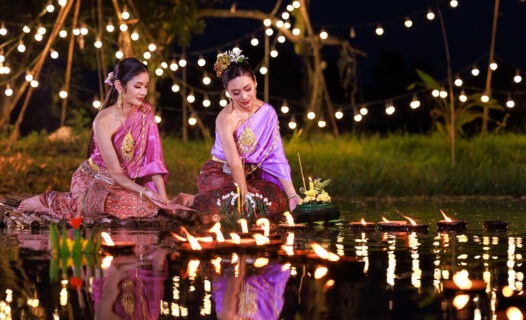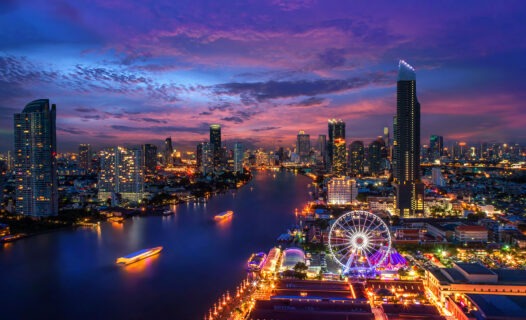Thinking about visiting Tokyo for the first time? This capital city of Japan surely has a lot on offer for the visitors to enjoy from beautiful sightseeing, to fantastic dining experiences, to great shopping sprees. Therefore, it’s no wonder why it could be quite overwhelming to put the pin down and finalize the itinerary in this big metropolis. Don’t fret about this, as we’re here to help you.
While there are many can’t-miss districts in Tokyo to go, today we’d like to introduce you to this vibrant area called Ueno. Nestled in the heart of Tokyo, Ueno is an effervescent district that combines culture, nature, and history into one big hub that gives you a glimpse into the Japanese city life. This bustling area is renowned for Ueno Park, a sprawling green oasis that houses several major museums, including the Tokyo National Museum, the Tokyo Metropolitan Art Museum, and the Ueno Zoo, Japan’s oldest zoo. Beyond its cultural attractions, Ueno offers a lively atmosphere with Ameya Yokocho Market, a vibrant street market brimming with food stalls, shops, and local energy, making it a captivating destination for both residents and visitors seeking a diverse Tokyo experience.
Apart from many important attracts mentioned above, the district offers excellent accessibility for visitors planning a trip to Ueno. Getting around here is easy, as you can take multiple train lines, including the JR lines and the Tokyo Metro.
We’re already excited for you to see what it’s like in Ueno, so don’t waste any more time and have a look at our recommendations for the best bits of Ueno!

1. Explore ancient Japanese art and history at TOKYO NATIONAL MUSEUM
If you plan to visit just a few museums during your time in Tokyo, this Ueno museum should be at the top of your list. Tokyo National Museum is the oldest national museum in Japan and one of the largest museums in the world. Located in Ueno Park, the 147-year-old museum contains more than 110,000 ancient Japanese artifacts – including kabuki masks, samurai swords, ancient tools and Buddhist treasures. Tokyo National Museum also features special and rotating exhibits. Audio guides are available in English for most of the permanent exhibits.
Permanent exhibits at Tokyo National Museum
- Kuroda Memorial Hall
- Japanese Gallery (Honkan)
- Asian Gallery (Toyokan)
- The Gallery of Horyuji Treasures
- Highlights of Japanese Arts
- Azekura Repository


2. Immerse yourself in the local culture at UENO PARK
Within a short walking distance from Ueno Station lies Ueno Park, a large public park that is home to the district’s most popular attractions, including Ueno Zoo, several museums, temples, shrines, a lively open-air market and a giant statue of Buddha. The park grounds are also home to hundreds of cherry trees, which bloom in early spring. Entry to Tokyo Metropolitan Ueno Park is free, but there is a fee to enter the Ueno Zoo and some of the other attractions.
Attractions at Ueno Park
- Gojunoto Tower
- Tokyo Bunka Kaikan (Tokyo Culture Hall)
- National Museum of Western Art, Tokyo
- National Museum of Nature & Science
- Tokyo National Museum
- Jizo Statue
- Toshogu Shrine
- Shinobazuike Bentendo Temple
- Shitamachi Museum
- Yushima Tenjin (Tenmangu) Shrine
- Statue of Saigo Takamori
- Ueno Royal Museum
- Kiyomizu Temple
Check In to Hotel New Tohoku, Step Out to Ueno Park


3. Shop for bargains on clothing, crafts and more at AMEYOKO MARKET
Located just south of Ueno Station, this bustling market street is one of Tokyo’s hidden gems. You’ll find everything from crafts to surplus military gear at this giant bazaar, which has remained largely unchanged since it opened after the second world war. This partially covered market is also a great place to sample Tokyo’s best seafood. In keeping with Ameyoko‘s black market origins, prices are cheap at this noisy, yet surprisingly well-organized market. Most stores focus on a single product, and great deals can be found at just about any time of year.
Best places to shop and eat at Ameyoko Market
- Ameyoko Camera
- Sports Juen Ameyoko Kan
- Yamashiroya
- Nakata Shoten Ameyoko Shop
- Mihasi Ueno Main Store
- Minatoya Foods


4. Get up-close and personal with lions, tigers and bears (oh my!) at UENO ZOO
Founded in 1882, Ueno Zoological Gardens is the nation’s oldest zoo. The zoo, which is located at the north end of Ueno Park, houses 3,000 animals representing 400 different species, including Sumatran tigers, Indian lions, and polar bears. Ueno Zoo is divided into two areas – a West Park and an East Park. Don’t forget to check out the five-story pagoda and 17th-century tea house, also located in the east area of the zoo. Ueno Zoo is situated within a five-minute walk from Ueno Station (Park Exit). Opening hours are vary by season, so be sure to call ahead for the most up-to-date schedule.
West Park animals and attractions
- Black rhinos
- Cows
- Zebras
- Giraffes
- Shinobazu Pond
- Children’s Zoo
- Small Mammal House
East park animals and attractions
- Giant pandas
- Western lowland gorillas
- Llamas
- California sea lions
- Monkeys
- Tea house
- Pagoda


5. Convene with nature in stunning 3D at the NATIONAL MUSEUM OF NATURE AND SCIENCE
Another great Ueno museum to visit is the National Museum of Nature and Science. Located at the northeast corner of Ueno Park, the museum boasts Japan’s largest collection of science exhibits on everything from dinosaurs to the outer space. Permanent exhibits include a mummy from the Edo period (1603-1867), the stuffed body of Hachiko, an authentic World War II fighter plane and a meteorite fragment that is presumed to have hit China during a meteor shower in 1516. The museum’s main draw, though, is 360-degree movie theater, which allows viewers to experience natural phenomena in spherical 3D. The National Museum of Nature and Science is open Tuesday to Sunday from 9:00 a.m. to 5:00 p.m.
Permanent exhibits at the National Museum of Nature and Science
- Nature of the Japanese Islands
- Japanese People and Nature
- Progress in Science and Technology
- Investigation Technology for the Earth
- Animal of the Earth
- Techniques in Observing Nature
- Navigators on the History of Earth
- Evolution of Life – Exploring the Mysteries of Dinosaur Evolution
Check In to Hotel Sardonyx Ueno, Step Out to National Museum of Nature and Science


6. Discover the works of Japanese sculptor Fumio Asakura at the ASAKURA CHOSO MUSEUM
Asakura Choso Museum, also known as Asakura Museum of Sculpture, is an art gallery located in Yanaka, a historic area just outside of Ueno in the Taito Ward. The museum showcases the art of Japanese sculptor Fumio Asakura, who used the building as a residence and atelier up until his death at the age of 81 in 1964. Asakura Choso Museum is divided into two areas: a Western-style studio, which exhibits several life-sized statues, and a Japanese-themed residential space, which gives visitors a peek into how the artist lived. In addition to Asakura’s famous bronze sculptures, the three-story museum houses paintings, ceramics and an impressive library. Asakura Choso Museum is situated within a 5-minute walking distance of Nippori Station (Yamanote Line). The museum is open to the public on Tuesdays, Wednesdays and Thursdays from 9:30 a.m. to 4:30 p.m.
Things to see and do at Asakura Choso Museum
- Orchid Room
- Sunrise Room
- Roof garden
- Japanese garden
- Carp pond
- Courtyard
- Tearoom
- Study

7. View cherry blossoms and visit the grave of the last Shogun at YANAKA CEMETERY
Another popular attraction in the Yanaka neighborhood is Yanaka Cemetery, the burial grounds of Tokugawa Yoshinobu, the last Shogunate from the Edo Period (1603 – 1868). The 100,000-square-foot park features a long “tunnel” of cherry trees that offers visitors a unique hanami (cherry blossom viewing) experience during late March and early April. To get to Yanaka Cemetery, follow the cherry blossom trail north from Ueno Park. Alternatively, you can take the subway to Nippori Station (Yamanote Line).
Attractions near Yanaka Cemetery
- Kayaba Coffee
- Yanaka Ginza
- Teno-ji Temple
- Asakura Museum of Sculpture


8. Take a relaxing dip in a hot spring at ROKURYU KOSEN
Rokuryu Kosen is a traditional-style onsen (hot spring facility) located near Ueno Park. The facility, which has been open since 1931, features two communal baths: one with warm water and one with water that can get as hot as 100 degrees Farenheit or more. The spas are filled with “black” water, which is high in naturally occurring minerals and said to help with dozens of ailments, from chi imbalance to rheumatoid arthritis. Rokuryu Kosen is located within a 15-minute walking distance of Ueno Station. The facility is open from 3:30 p.m. to 11:00 p.m., Tuesday through Sunday.
Services and amenities at Rokuryu Kosen
- Men’s baths
- Women’s baths
- Snack shop
- Dressing rooms
- Towels
- Soap and shampoo


9. Learn about the history of manga at TAKEHISA YUMEJI MUSEUM
Located in the Yanaka area, Takehisa Yumeji Museum celebrates the life and work of Yumeji Takehisa, a Japanese painter who was popular during the Taisho period. The museum houses artworks, illustrations, magazines and prints from the Meiji and postwar eras. Takehisa Yumeji Museum comprises two galleries, each of which is dedicated to the history of Japanese animation and illustrations. Rotating exhibits are displayed at regular intervals throughout the year and include curated works from the museum’s collection. When you’re ready to take a break from all of the art viewing, head to Yumeji Cafe Minatoya to enjoy a fresh coffee while overlooking the museum’s beautiful gardens. Takehisa Yumeji Museum is located within a 5 to 10-minute walking distance of Nezu Station (Chiyoda Line). The galleries are open to the public Tuesdays through Sundays from 10:00 a.m. to 5:00 p.m.
Prints in collection at Takehisa Yumeji Museum
- Koka no omoide (“The Old Refrain”)
- Chinese Ship Shop
- Spring Glance
- Furusato no uni (“Hometown of the Sea”)
- Cove of Oranges





































